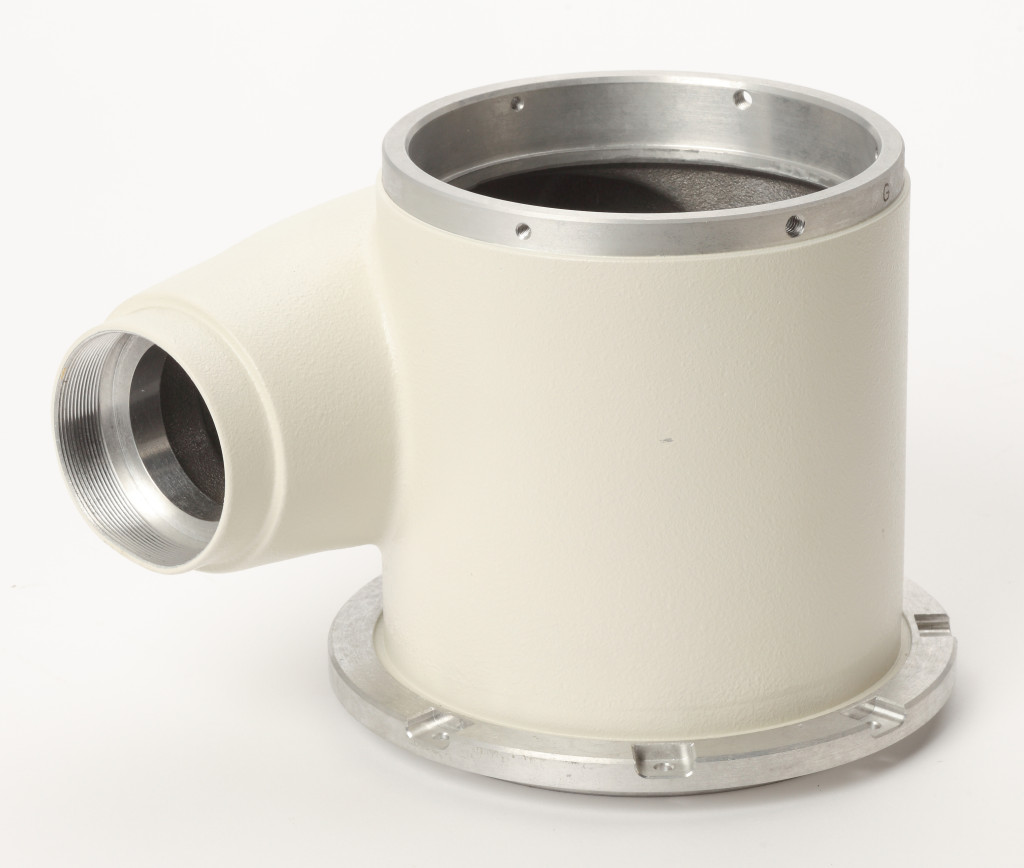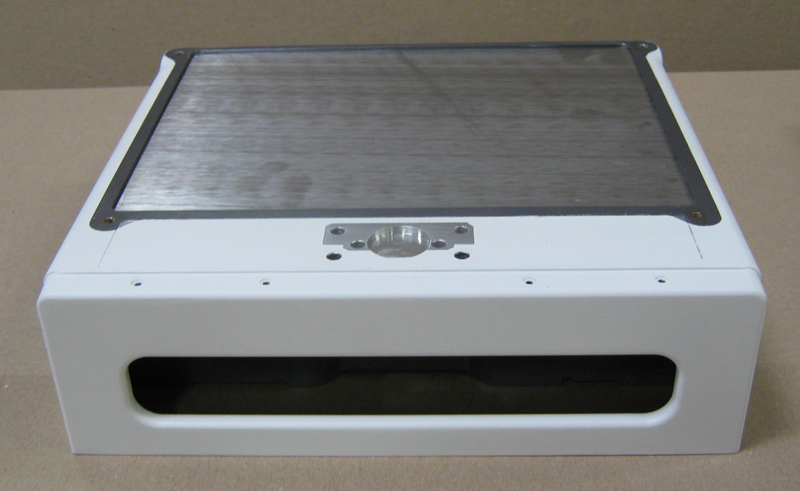Paint and powder coatings on lead are very effective coatings to protect and encapsulate lead products. Many people do not realize that lead can be powder coated because of the baking process used to cure the powder but it can be applied and provides a very tough coating. Lead is very heavy and soft making it easy to damage. If coatings are improperly applied, paint flaking can occur. There are three types of paint coatings and they have one key similarity: part preparation.
Prepping of Lead Materials
The secret to having a good paint / powder coating bond to lead is prep, prep, prep. In our paint and powder lines, there are multiple steps to ensure a proper bond of which only one is the application of the coating.
By its nature, lead oxidizes when in contact with air. This causes a build up on the surface – which may be hard to see – but it’s there and it gets worse over time. These oxides need to be removed to allow for proper bonding. Depending on the part, this can be done through acid washing, abrasive prep, soaking and wipe down or multiple combinations of these steps.
It is also important to note that any washing solutions will need to be treated because they contain lead. Any abrasive clean up or soaking requires proper lead handling techniques. A certified process is needed to properly handle lead and paint lead to ensure that the chemicals and cleaning agents are properly treated and discarded.
Prep is the most important element for a good coating and paint shops or suppliers that are not set up to handle l ead should not be doing so from a quality standpoint or an EHS perspective.
ead should not be doing so from a quality standpoint or an EHS perspective.
Powder Coating
Powder coating is the toughest and most durable paint coating that can be applied to your lead parts. Powder coating applies an electrostatic charge to your parts applying a positive charge while the powder is sprayed at a negative charge so the powder is attracted to the part it is coating.
When the part is sprayed with powder, the coating is soft and easy to damage. It requires a baking process to harden the coating. This baking is done in a curing oven with a range of 325 to 450 degrees. Cure times vary by coating and mass. Lead melts at 621 degrees and gets soft under 621 degrees so proper handling throughout the process is key to achieve a quality product.
 The result of powder coating your lead parts or lead transport pigs is a superior coating that is more durable than any paint coating. Powder typically goes on .002″ to .004″ thick so it is thicker than typical paint coatings. But like wet coatings, powder will still flow into corners like wet coats do causing the powder to be thicker in corners and thinner on flat sections.
The result of powder coating your lead parts or lead transport pigs is a superior coating that is more durable than any paint coating. Powder typically goes on .002″ to .004″ thick so it is thicker than typical paint coatings. But like wet coatings, powder will still flow into corners like wet coats do causing the powder to be thicker in corners and thinner on flat sections.
Powder coating also allows for some thicker build coatings. Wrinkle coatings occur more with powder coatings than wet coat paint. Powder is also more durable and tougher on lead if parts are bumped. It’s important to remember that paint and powder on a lead part is similar to applying a coating to a stick of butter. The material is very soft under the coating.
Vulcan can apply all major manufacturers of powder to your lead parts. We have several stock options in multiple colors. There are thousands of different types of colors and coatings; some are standard while others may be custom ordered.
Paint Coatings
 Wet coat is a good coating technique to apply paint on lead. This is by volume the highest use in the market. There are thousands of options to chose from and new technology in coating allows for great build up and wrinkle coatings than before. Also many coatings can also be applied thru an electrostatic process like powder which in wet coat lowers application and materials costs.
Wet coat is a good coating technique to apply paint on lead. This is by volume the highest use in the market. There are thousands of options to chose from and new technology in coating allows for great build up and wrinkle coatings than before. Also many coatings can also be applied thru an electrostatic process like powder which in wet coat lowers application and materials costs.
Wet coatings all have a cure time, each coating is different but most will require an elevated temperature for a duration of time to all for proper curing. Typical wet coatings are applied at .001″ t0 .003″ thickness and they do flow into corners when applied and when curing. This is why dimensions and tolerances are held before paint as coatings can flow before they are cured.
Basic Paint Coatings
For many applications, the best coating is one that simply prevents contact while handling a lead part during customer use or assembly. This can also be described as the “I do not want to touch raw lead” coating.
For applications such as this, Vulcan offers basic paint or primer coatings that are applied to simply cover raw lead surfaces. This can be effective for customer handling during assembly or in applications where a lead part may be exposed internally on a machine and a coating is preferred for future service to the machine so that the lead is not exposed.
This type of coating is also effective when you are painting lead-lined sheet metal applications because the basic wet coat can cover the lead and sheet metal in one process. Remember that in powder coating – and in some paint coatings – curing is needed. Many adhesives that are used in lamination break down at the temperatures needed to cure powder.
Conclusion
No matter what type of coating you wish to apply to lead, proper surface prep is the key element to ensure that the coating will bond properly.
Proper handling of any cleaning solvents or debris created during part cleaning must be handled properly. It contains lead and must be processed by a certified painter. There are multiple coating options including powder, paint and basic primer type coatings.
All of these coatings have good benefits and Vulcan can help you select the best solution to meet your applications needs. Contact us if you have any questions about paint and powder coating.

